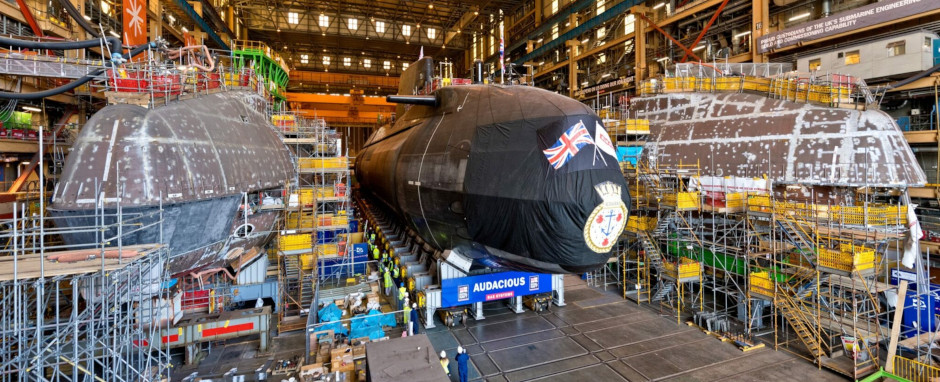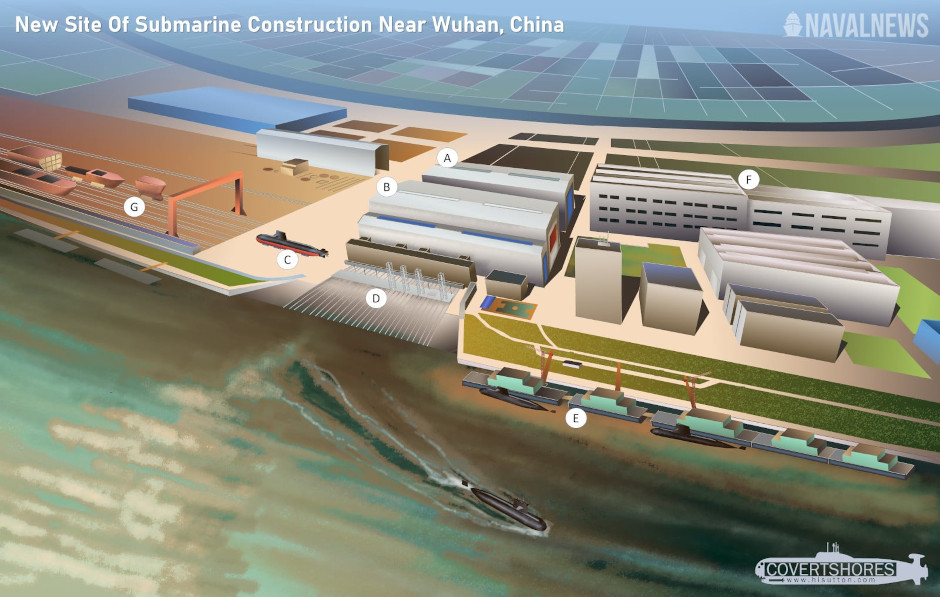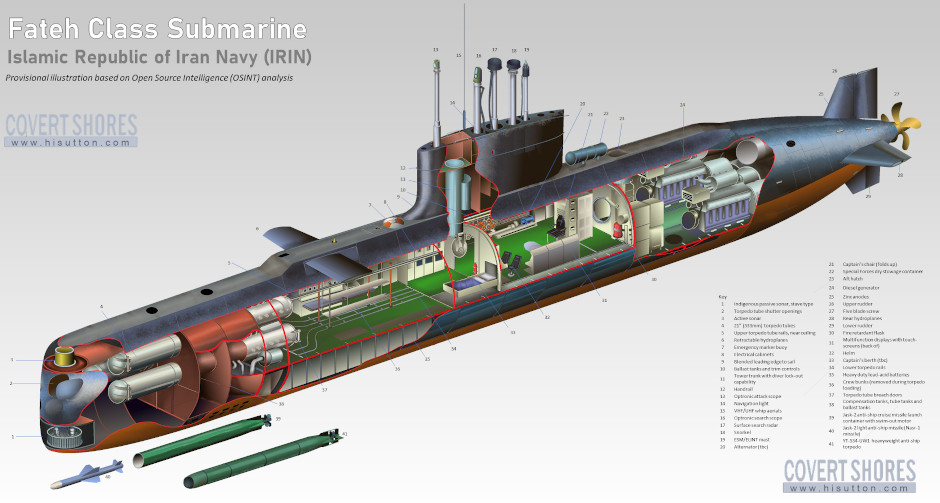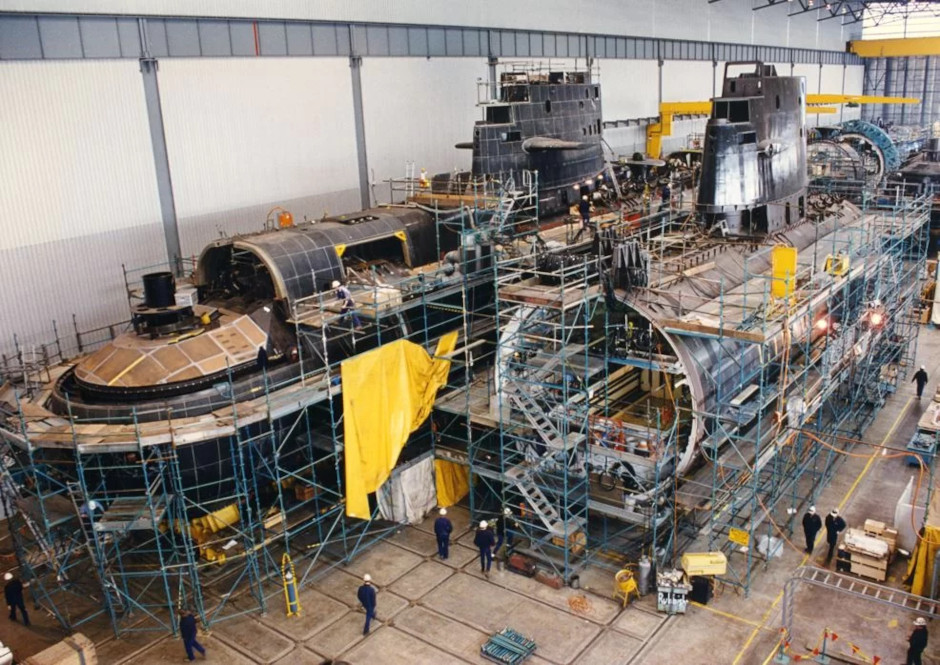
3 Astute Class nuclear submarines under construction at Barrow, United Kingdom. Photo BAE Systems
Countries That Can Design And Build Submarines Today
There are more countries building submarines today than there has ever been.
Submarines are apex predators. Even the most basic or vintage types can be deadly to the enemy if operated competently. Fittingly, the best submarines are among the most expensive naval vessels in existence. At the same time the bottom-end designs represent incredible value for money for navies with only modest means.
They are, by definition, extreme engineering. Even the most basic boat requires knowledge, skills and tools which set the entry bar pretty high. But their usefulness in modern warfare has driven many countries to enter the game. The list may be longer than you realized.
This is a list of countries which can design and build a full-sized submarine(see definition below) today.
Building Nuclear Submarines
 United States
United States
 China
China
 United Kingdom
United Kingdom
 France
France
 Russia
Russia
 India. First indigenous ballistic missile submarine (SSBN), INS Arihant, commissioned in 2016.
India. First indigenous ballistic missile submarine (SSBN), INS Arihant, commissioned in 2016.

Intelligence-based sketch of Wuchang Shipyard, China. China has the largest submarine building capacity of any country with 3 major shipyards involved, building both nuclear and non-nuclear types.
The new construction halls (A) are at the center of the site. Thailand's new submarine is likely to have been built in the hall nearest the river (B). The submarines are rolled out of the sheds on rails (C) and launched sideways into the river (D). They are moored alongside to be fitted out (E). Expansive new halls are still being built in several areas of the site (F). Civilian ship building largely takes place in the open (G).
Building Non-Nuclear Submarines
 Germany. Major exporter of submarines and submarine-building technology.
Germany. Major exporter of submarines and submarine-building technology.
 Sweden. Currently building A-26 class.
Sweden. Currently building A-26 class.
 Japan. First country to use Lithium based batteries to power a full-sized submarine.
Japan. First country to use Lithium based batteries to power a full-sized submarine.
 Italy. Builds Type-212A which is a joint German project. But retains knowledge to fully design own submarines.
Italy. Builds Type-212A which is a joint German project. But retains knowledge to fully design own submarines.
 North Korea. The Gorae class is an indigenous design.
North Korea. The Gorae class is an indigenous design.
 South Korea. Progressed from building German designs to its own. Also exports submarines.
South Korea. Progressed from building German designs to its own. Also exports submarines.
 Spain. Currently building S-80P submarines.
Spain. Currently building S-80P submarines.
 Iran. Indiginous Fateh class submarine is at the low-end of the spectrum but qualifies as a legitimate 'full-sized' submarine.
Iran. Indiginous Fateh class submarine is at the low-end of the spectrum but qualifies as a legitimate 'full-sized' submarine.
Emerging: Projects Underway
 Taiwan. First submarine design, the IDS, under construction. Some external help/influence
Taiwan. First submarine design, the IDS, under construction. Some external help/influence
 Brazil. Building Álvaro Alberto class nuclear submarine.
Brazil. Building Álvaro Alberto class nuclear submarine.
 Turkey. Having built German designs, now starting to offer indigenous types. First likely to be the MILDEN class.
Turkey. Having built German designs, now starting to offer indigenous types. First likely to be the MILDEN class.

Original artwork based on photo analysis - CLICK IMAGE FOR HIGH-RESOLUTION:
Iran's Fateh Class is a relatively basic design, and in many respects defines the minimum viable product for a 'full sized' submarine. Credit where credit is due.
Have Some Required Elements But No Projects
 Australia. Has build Swedish-designed Collins class. However opting for imported nuclear submarine designs (AUKUS).
Australia. Has build Swedish-designed Collins class. However opting for imported nuclear submarine designs (AUKUS).
 Indonesia. Builds German designed submarines (via South Korea). Has flirted with indigenous designs but no clear plans.
Indonesia. Builds German designed submarines (via South Korea). Has flirted with indigenous designs but no clear plans.
 Netherlands. Used to build submarines but design capability lost c2000. However lots of expertise in country.
Netherlands. Used to build submarines but design capability lost c2000. However lots of expertise in country.
 Pakistan. Local construction of French and now Chinese boats. Has built an indigenous midget submarine.
Pakistan. Local construction of French and now Chinese boats. Has built an indigenous midget submarine.
 Norway. Some infrastructure but focusing on German designs.
Norway. Some infrastructure but focusing on German designs.

Australia built 6 Collins class submarines starting the 1990s. The next class, the nuclear-powered AUKUS, will also not be a local design. Photo ASC
Definition
For simplicity we will define a full-sized submarine as having the following minimum characteristics:< br>
A. Pressure hull diameter of about 4 meters or more, and length of around 50 meters. The intent here is that it requires a shipyard, it cannot be built in the industrial unit at the bottom of your street.
B. Diving depth of 100 meters or more. So proper materisals and design required.
C. Ability to stay submerged for several days with multiple submerging and surfacing evolutions. This also means crew facilities, with people working watches (shifts)
D. Crew of 10 or more, likely much more. Therefore requiring accommodation, mess, galley and other facilities often skipped on smaller submarines.
E. More than one power source (I.e. batteries plus diesel), with a snorkel and means to recharge batteries at sea.
F. Torpedo tubes and torpedo room with ability to at least remove a torpedo from the tube into the room. Lots of smaller subs skip this.
Related articles (Full index of popular Covert Shores articles)

 Project 09852 Belgorod Special Mission submarine (spy sub). w/Cutaway
Project 09852 Belgorod Special Mission submarine (spy sub). w/Cutaway

 Spain's S-80P Isaac Peral Class AIP submarine. w/Cutaway
Spain's S-80P Isaac Peral Class AIP submarine. w/Cutaway

 Chinese Navy's Advanced Submarine Type-039C Yuan Class. w/Cutaway
Chinese Navy's Advanced Submarine Type-039C Yuan Class. w/Cutaway

 Suffren (Barracuda) Class Attack Submarine w/Cutaway
Suffren (Barracuda) Class Attack Submarine w/Cutaway

